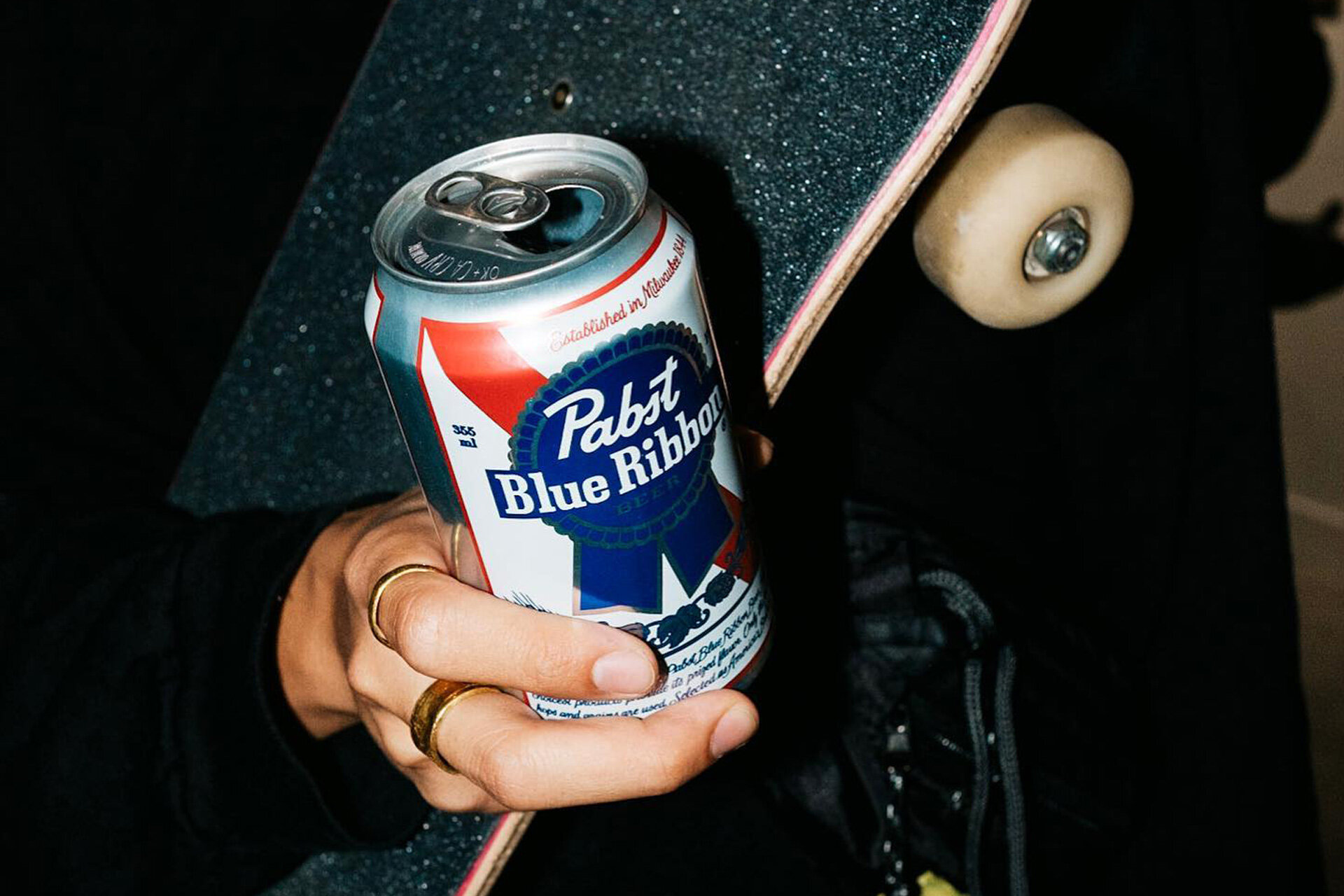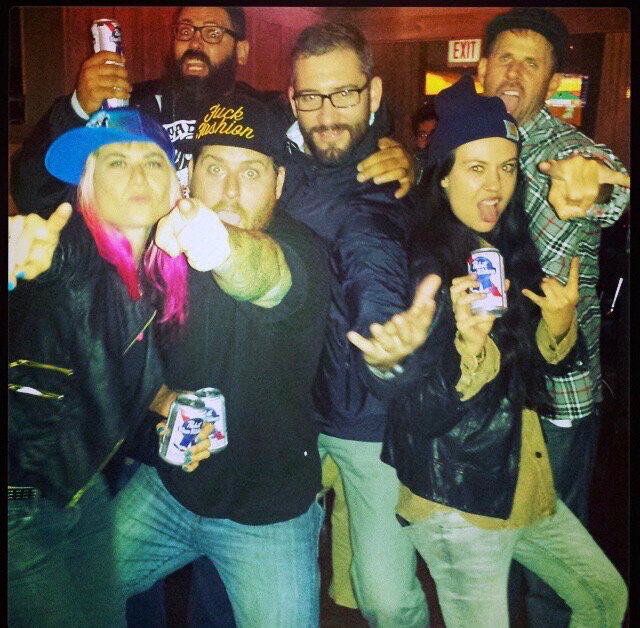The strategy behind Pabst Blue Ribbon’s decade of growth
Pabst Blue Ribbon’s early-2000s revival is a phenomenal success story. It skyrocketed from selling less than 1m gallons in 2001 to topping 92m gallons in 2012. Much has been written about the early team’s initial approach and success and many people have worked hard to continue the word-of-mouth approach ever since, resisting the temptation to big up the brand using conventional beer marketing techniques. Steve Nilsen AKA Stix spent nine years at Pabst as Lifestyle Marketing Manager: a successful tenure that saw the company sold for $250m in 2010 and then for a whopping $700m to American entrepreneur Eugene Kashper just four years later. Mark Barden talks to Nilsen to get a ‘behind the curtain’ understanding of the grassroots strategy at the heart of PBR’s long-term success and how it was implemented on the ground in local markets. Nilsen talks about the rejection of the big beer brands and the ‘fake’ advertising that led to Pabst’s popularity amongst younger consumers during the recession and explains the localised strategy that provided deep respect and understanding of local people, cultures, and communities otherwise overlooked by ‘big beer’.
Steve Nilsen AKA Stix at Project Pabst in Portland, Oregon in 2016. Photo: KC Blinn
Pabst already had significant momentum before you joined the company in 2009. What’s your sense of what made PBR attractive to those consumers in the first place?
The US was in a recession during 2007-2009, and the beauty of that was that Pabst didn’t have the budgets to advertise. There was no marketing being shoved down people’s throats. Pabst wasn’t Budweiser or Coors. It was spontaneous and honest and never fake. It’s the independent little scrappy brand, and everybody wants to support the little guy. And it’s a beautiful can. You can recognise it from a mile away. We inherited that branding and people felt cooler when they had that can in their hand. It gave them an edge. I soon realised that although I had no budget, I had this amazing brand equity to work with. We had gold in our back pocket. We had some brilliant stuff from the 80s and disco in the 70s. One of the first acting jobs Patrick Swayze ever had was a Pabst commercial in 1979. I would go to Milwaukee and just dig through the vaults with the other guys, and we would just laugh our butts off at this old footage. Pabst was always priced right, which was important during the recession. We considered ourselves top of the sub-premium.
How strategic were the conversations then about how to grow Pabst without fucking it up?
Stix (top-right) with some FMRs in San Antonio in 2015.
It was never in writing we just knew: it was about finding the cool kids. And we never told consumers -- ever -- what Pabst was: we let them decide for themselves. We had 40+ Field Marketing Reps (FMRs) around the United States. Because what’s cool in Kansas City is different to what’s cool in San Francisco and that’s something that big brands don’t understand. So we championed our Field Marketing Managers to own those markets. It was up to that local marketing manager to do what would work. We championed them to own those markets and we let each of them have their own social handle for that city. They would post on Instagram what was relative and would resonate with that city versus it coming from headquarters. When I or my counterparts in the brand team would go to a town, we would expect to not only see the coolest bars, but the tattoo parlours, the record stores, the skate shops, the bike shops, whatever was cool in the town: wherever the cool kids were. We would literally get cans in hands. What big corporations fail to realise is it’s a tonne of travel and work building relationships. Big beer companies would dump product at a skate shop and “check the box”. You’ve got to go in and hang out with them, watch a film, take care of them. Pabst was a lot of legwork, but it paid off. It really did. Brands would pay big money to be at Coachella or South by Southwest or X Games. We were at all those events, but we didn’t pay a dime to be there. We were just at the cool little parties and events on the periphery.
So critical to the success of the strategy must have been hiring the right Field Marketing Managers for those local markets. How did you ensure you found the right people who would really understand the local culture?
The more senior the role, the more of us would get involved in the interview process. But we had a really good success rate. For instance, our East Coast Marketing Director started in the field, and so he was perfect at interviewing and screening. We had some misses, though. There are expert interviewees out there, and some people would talk the talk, but it would take one market visit by any of us on the brand team to figure out if they really had the sand or not. They’d have to be able to identify the gatekeepers in these towns. And we would never put people in key markets unless we were 100% sure about them. It was a shame when it didn’t work out because you’d have to start over again to find the right person. Pabst also became so popular that when we’d post a new job everyone and their mother would apply. It was flattering. But people were doing it for the wrong reasons. They just wanted to tell people they were the Pabst person, but there was more to it than that. We would want to know what their hustle was. How hard were they going to work?
Shotgun fun at a Zero Skateboards tour in 2014. Photo: Zero Skateboards
PBR x GNU collaborative snowboard. Photo: Snowboard Mag
God bless those kids in the field. They’d be out every single night of the week. It takes a particular person to do that. I remember visiting a bar once, and this guy told me how much he loved the Pabst brand, and somewhere in the conversation, he told me he was a snowboarder. Soon after I sent the guy a Pabst snowboard, it showed two things: it was a “thank you” for being a Pabst customer, and it showed that I listened. I would remind the local managers that if they knew of someone’s hobby or a way to help someone, we should help them out like that. Little things like that would go a long way. Someone who holds weight in a local market spewing about how much they love our brand was just huge in terms of word of mouth.
Did you have to educate the senior people at Pabst about this local grassroots marketing model?
The 686 x PBR snowboard/ski parka holds 12 beers. Photo: KC Blinn
There was a lot of asking for forgiveness, not permission. I went through three bosses, three CMOS, in my time at Pabst. And every time I had to re-educate them as to why I was hired. The original CMO who hired me understood it. We were the odd couple: Ying and yang. He'd be in the pleated slacks explaining to the board of directors the business case for what we were doing, and they would look at me and think: who is this skater clown? He would just say to them, "Trust me. We'll sell more cases of beer." My last boss was there for years, and he knew how to manage our team. He knew he wasn't the audience and he would even say: "If I don't understand it, then go. If I do, then we shouldn't do it." He trusted us, and there has to be a high level of trust. Sometimes we'd get asked: "Why are we making a snowboard jacket that holds 12 beers? That makes no sense." But they didn't see the big picture. The point was: who makes a jacket that holds 12 beers? No one had seen anything like it. The jackets quickly sold out everywhere, and the amount of conversation it created was incredible. We didn't make many of those jackets, but the next thing you know is those same senior people at Pabst saying: "Oh can I get one of those jackets for my next ski trip to Mammoth?"
You’re now VP of Lifestyle Marketing at Liquid Death Mountain Water. What are some of the lessons from your experiences at Pabst you might apply to this new venture?
You have to have the right people for sure. We were fortunate with Pabst that we had the right people. People that actually believed in what we were doing. In regards to Liquid Death, look at the water business. Not only is plastic bottled water horrible for the environment [Liquid Death is packaged in infinitely recyclable cans] with these big companies literally polluting our oceans, but no one has done anything interesting with the branding and the messaging of water. We’re going to be the bee in the bonnet. We dropped an album recently called The Greatest Hates, and all the lyrics are from our hate comments from social media. We literally took people’s hate comments and made it into a metal album. We’re getting cans in hands, and then following it up with out of the box marketing and having fun with a CPG industry that has generally just chugged along. And who on this earth, especially with what’s going on right now, doesn’t want to have some fun?






